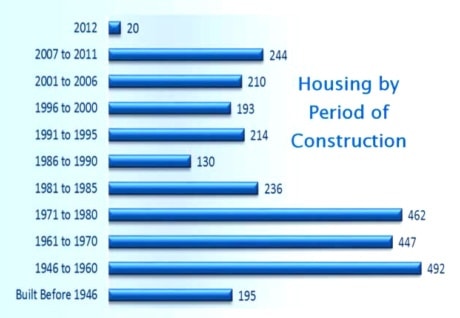Businesses considering Ponoka as a base for their operations now have a clearer overview of what the town has to offer thanks to a recent report.
Statistics in the report provided by Environics Analytics to the Central Alberta Economic Partnership, of which the Town of Ponoka is a member, have provided an economic overview of the town. These economic indicators are ideal pieces of information for potential businesses, explained Sarah Olson, economic development officer. “They provide a snapshot of economic growth and activity over the years and what’s expected to continue.”
When companies look at a community they research specific details, she explained, and the information found in this document is similar to what they look for.
“It just helps them get a better view of what our community looks like,” added Olson.
There are two areas in the report she feels will help a business see the workforce available to them; education and occupational groups. For the latter; sales and service, (921) trades, transport and operators (682) and health (541) represent the largest number of work groups in Ponoka.
“As far as occupational groups are concerned, these are areas that we could expand in,” said Olson.
The former shows almost 1,500 people have their high school or equivalent education and just under 1,000 have college or university certificate diplomas. Betty Jurykoski, planning and development officer, suggests that many high school graduates will start their apprenticeship training right after high school. While more than 1,500 residents have no certificate, diploma or degree, Olson believes many of these people are senior residents.
“There are quite a few of the older generation who still don’t have, necessarily, that qualification,” she added.
There appears to be a steady increase in housing construction as well, since 1996 the town has seen growth: 1996 to 2000 shows 193 new homes, 2001 to 2006 shows 210 homes and 2007 to 2011 shows 244 new homes.
When companies seek to buy land in the community, Jurykoski said she works quickly to ensure prospective employers have what they need. At times that may just be passing on contact information for landowners and buyers. “We just work with them to put them together.”
This has seen some success recently.
“I’ve got a couple of really good solids on some land, potentially in the Northeast Industrial Park,” Jurykoski added.
Another area of interest in the report is the percentage of people that own rather than rent in the Town of Ponoka; 78 per cent own and 22 per cent rent their homes.
An important consideration was that the information provided by Environics Analytics may have differences from Statistics Canada. Olson said the company may use different sets of data to compile the information. Despite this, she feels what matters in this instance is the fact that businesses are interested in Ponoka.
“It’s important to note that these are the types of companies… that businesses go to get their data,” added Olson.
Jurykoski suggested current Ponoka businesses would also be able to use this information when considering expansion.
